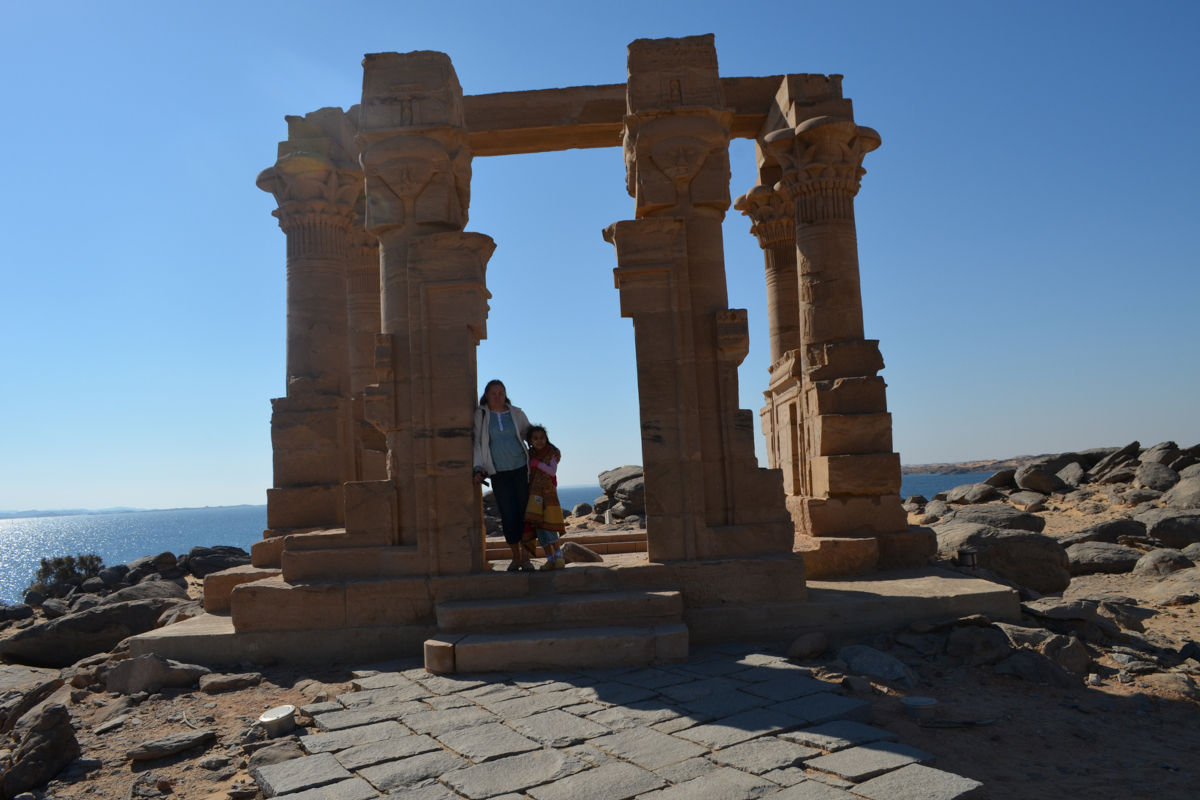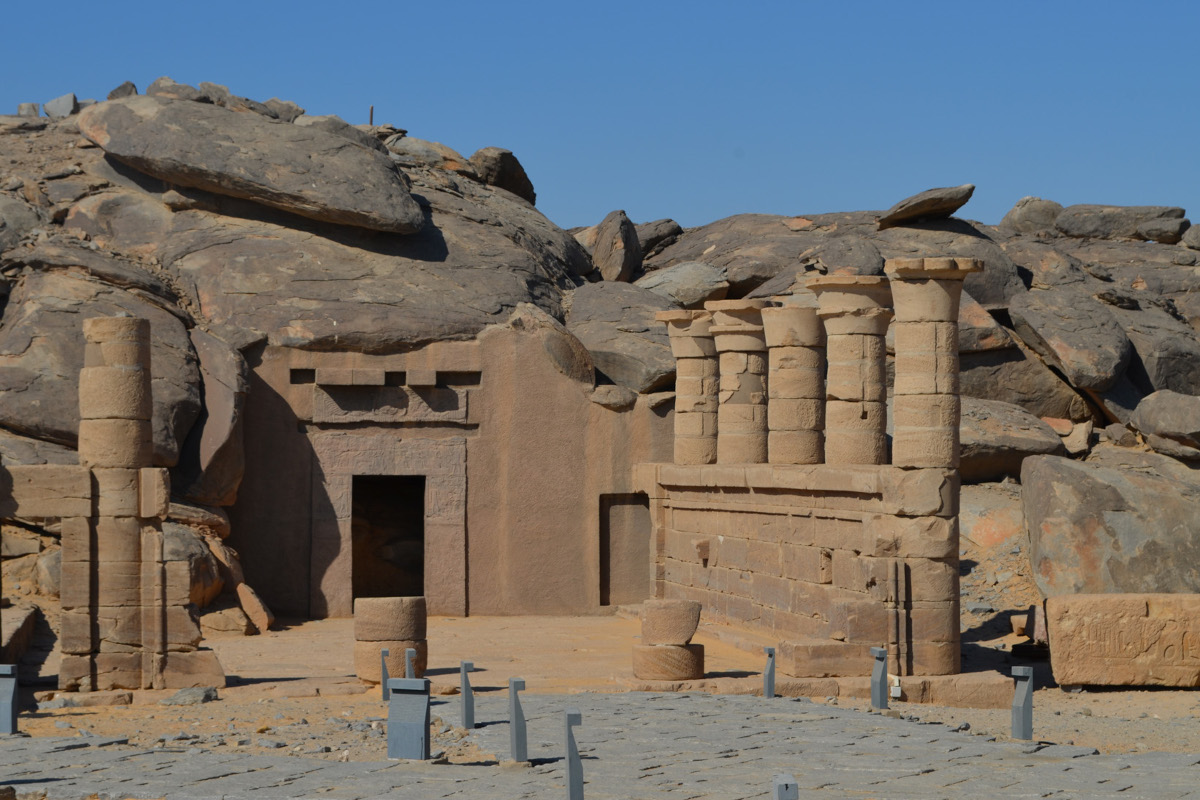Kalabsa Temple: A Nubian Gem

Introduction to Kalabsa Temple
If you're a history enthusiast or simply love exploring ancient wonders, then Kalabsa Temple in Sudan is a must-visit destination. This hidden gem offers a glimpse into the rich Nubian civilization and its architectural marvels.
Overview of Kalabsa Temple
Kalabsa Temple, also known as the Temple of Kalabsha, is located on the western bank of Lake Nasser in southern Egypt. Built during the Roman era, this temple was dedicated to the Egyptian god Horus and the Nubian god Mandulis.
The temple's grand structure showcases impressive architectural features, including towering columns, intricate carvings, and well-preserved reliefs. The main entrance leads to a spacious courtyard adorned with statues and offering breathtaking views of the surrounding landscape.
Inside the temple, you'll find beautifully decorated halls and chambers that depict scenes from ancient Egyptian mythology and religious rituals. The intricate hieroglyphics and vibrant colors add to the temple's allure, transporting visitors back in time.
Historical significance of Kalabsa Temple
Kalabsa Temple holds immense historical significance as it is a testament to the cultural exchange between ancient Egypt and Nubia. During the construction of the Aswan High Dam in the 1960s, several ancient temples were relocated to prevent them from being submerged underwater. Kalabsa Temple was one of these temples, carefully dismantled and reconstructed at its current location.
Visiting Kalabsa Temple allows you to witness the preservation efforts that have kept this ancient structure intact for centuries. It serves as a reminder of the once-thriving Nubian civilization and its contributions to art, architecture, and religious practices.
In addition to exploring the temple itself, visitors can enjoy panoramic views of Lake Nasser and take a stroll along the tranquil shoreline. The serene atmosphere and stunning natural surroundings make Kalabsa Temple a truly unforgettable experience.
So, if you're planning a trip to Egypt or Sudan, don't miss the opportunity to visit Kalabsa Temple and immerse yourself in the fascinating history of the Nubian civilization.

Location and Architecture of Kalabsa Temple
Geographical location of Kalabsa Temple
If you are an avid traveller looking for hidden gems, Kalabsa Temple in Sudan should be on your list. Located in the northern part of Sudan, near the border with Egypt, this ancient temple is nestled amidst the stunning landscape of the Nubian Desert. The temple sits on the banks of the Nile River, providing a picturesque backdrop for visitors to admire.
Architectural style and design of the temple
The Kalabsa Temple is a true testament to the architectural brilliance of ancient Nubian civilization. Built during the reign of Pharaoh Ramses II, this temple showcases a unique blend of Egyptian and Nubian architectural styles. The temple is carved out of sandstone and features intricate reliefs and hieroglyphics that depict scenes from ancient Egyptian mythology and religious rituals.
The temple's design is characterized by its massive pylons, towering columns, and grand entrance gateways. The main sanctuary houses a large statue of Ramses II, symbolizing his divine power and authority. The temple's walls are adorned with colourful paintings that have managed to withstand the test of time.
One notable feature of Kalabsa Temple is its alignment with the sun during specific times of the year. During the equinoxes, sunlight illuminates the inner sanctum, creating a mesmerizing play of light and shadow.
Visiting Kalabsa Temple allows you to step back in time and experience ancient Nubia's rich history and culture. Its remote location adds to its charm, as it remains relatively untouched by mass tourism.
So, if you're seeking an off-the-beaten-path adventure and a glimpse into an ancient civilization, include Kalabsa Temple in your travel plans.
History and Cultural Significance of Kalabsa Temple
Historical background and timeline of the temple
If you are a history enthusiast or a curious traveller, the Kalabsa Temple in Nubia is a must-visit destination. This ancient temple holds a rich historical background that dates back thousands of years.
The Kalabsa Temple's construction began during Pharaoh Ramses II's reign in the 13th century BC. It was dedicated to the Nubian god Mandulis, also known as Merul, associated with the sun and fertility. The temple was built as a place of worship and served as a significant religious centre for the local Nubian community.
Over time, the temple faced various challenges, including flooding from the Nile River and relocation efforts due to the construction of the Aswan High Dam in the 1960s. However, thanks to international efforts, the temple was dismantled and relocated to its current location on a hill overlooking Lake Nasser. The reconstruction aimed to preserve its historical and cultural significance for future generations.
The cultural and religious importance of Kalabsa Temple
The Kalabsa Temple holds immense cultural and religious importance for locals and visitors alike. It offers a glimpse into the ancient Nubian civilization and their religious practices.
The temple's architecture showcases intricate carvings, hieroglyphics, and reliefs that depict scenes from ancient Egyptian mythology and daily life. These artistic representations provide valuable insights into the Nubian people's beliefs, customs, and traditions during that era.
Furthermore, the temple serves as a place of pilgrimage for those seeking spiritual connection and historical enlightenment. Its serene surroundings and breathtaking views make it an ideal spot for reflection and contemplation.
Visiting Kalabsa Temple allows you to immerse yourself in the rich cultural heritage of Nubia and witness the remarkable craftsmanship of ancient Egyptian architecture. It is a testament to the enduring legacy of a civilization that has left an indelible mark on human history.
So, if you have a passion for history and want to explore the hidden gems of ancient civilizations, include Kalabsa Temple in your travel itinerary.

Exploration and Discoveries at Kalabsa Temple
Archaeological excavations and findings at the temple
If you're a history enthusiast or love exploring ancient sites, then Kalabsa Temple should be on your must-visit list. Situated in the Nubian region of Sudan, this hidden gem has revealed fascinating insights into the area's rich history.
Archaeological excavations at Kalabsa Temple have unearthed remarkable findings that shed light on the ancient Nubians' religious practices and architectural prowess. The temple, dedicated to the Egyptian god Amun, was built during the reign of Pharaoh Amenhotep III in the 14th century BCE. It was later expanded by Ramses II, who added his own inscriptions and reliefs to the temple walls.
The excavations have revealed intricate carvings, hieroglyphics, and detailed reliefs depicting ancient Egyptian mythology scenes. These artistic representations provide valuable information about the religious beliefs and rituals of the time. The temple's architecture showcases the skill and craftsmanship of the Nubian builders, with its grand entrance, towering columns, and beautifully decorated walls.
Notable artefacts and inscriptions found at Kalabsa Temple
Among the notable artefacts discovered at Kalabsa Temple is a statue of Ramses II seated on a throne. This impressive sculpture is a testament to this great pharaoh's power and influence. Inscriptions found on the temple walls also provide valuable historical information, including details about military campaigns and diplomatic relations between Egypt and Nubia.
One particularly significant finding is a relief depicting Queen Nefertari presenting offerings to the gods. This suggests that she played an important role in religious ceremonies at Kalabsa Temple. Other inscriptions mention various gods and goddesses worshipped at the temple, further highlighting the religious significance of this ancient site.
Visiting Kalabsa Temple offers a unique opportunity to immerse yourself in the captivating world of ancient Nubia. From the awe-inspiring architecture to the intricate carvings and inscriptions, every corner of this temple tells a story waiting to be discovered. So, pack your bags, grab your camera, and prepare for an unforgettable journey back in time.

Preservation and Restoration Efforts at Kalabsa Temple
Conservation initiatives and measures taken to preserve the temple
Suppose you are a history enthusiast or appreciate ancient architecture. In that case, you will be glad to know that the Kalabsa Temple, located in Nubia, has been the subject of extensive preservation efforts. The temple, dating back to the Roman era, is a true gem that showcases the rich history and culture of the Nubian people.
Various conservation initiatives have been implemented to ensure this historical site's longevity. These include regular maintenance and cleaning to prevent deterioration caused by weathering and natural elements. Additionally, protective barriers have been installed to safeguard the temple from potential damage caused by visitors.
Furthermore, experts have conducted thorough research and analysis to understand the unique challenges the temple's structure faces. This knowledge has guided the implementation of specialized conservation techniques, such as stabilizing the foundations and reinforcing weak areas. These measures aim to prevent further deterioration and preserve the temple for future generations to appreciate.
Restoration projects and their impact on the temple's preservation
In addition to conservation efforts, restoration projects have played a crucial role in preserving the Kalabsa Temple. Skilled craftsmen and archaeologists have meticulously worked on restoring damaged sections of the temple, including intricate carvings and architectural elements.
The restoration projects aim to repair damages and recreate missing parts based on historical evidence. This meticulous attention to detail ensures that the temple is restored as accurately as possible, allowing visitors to experience its original grandeur.
The impact of these restoration projects extends beyond preserving the physical structure of the temple. They contribute to a deeper understanding of Nubian history and culture, providing valuable insights into ancient civilizations.
Thanks to these preservation and restoration efforts, visitors can now marvel at the beauty of Kalabsa Temple and immerse themselves in the rich history of Nubia. It is a testament to the dedication and commitment of individuals and organizations working tirelessly to protect and showcase our shared heritage.

Visitor Experience at Kalabsa Temple
Access and entry requirements for visitors
If you are planning a visit to the enchanting Kalabsa Temple, you should know a few things. Located in the heart of Nubia, this hidden gem offers a unique and awe-inspiring experience. To access the temple, you can take a boat ride along the majestic Nile River, which adds to the sense of adventure and tranquillity.
Entry requirements for visitors are straightforward. You will need to purchase a ticket at the entrance, and it is advisable to check the opening hours beforehand. Bringing comfortable shoes and sun protection as you explore the temple grounds is also recommended.
Highlights and must-see features within the temple
Once inside, you will be greeted by the remarkable architecture and intricate carvings adorn the temple walls. The Kalabsa Temple is known for its well-preserved reliefs depicting ancient Egyptian gods and pharaohs. These artistic masterpieces provide a glimpse into the rich history and culture of the Nubian civilization.
One of the must-see features within the temple is the Hypostyle Hall, with its towering columns that create an impressive sight. As you wander through this sacred space, take a moment to appreciate the craftsmanship and attention to detail that went into its construction.
Another highlight is the sanctuary, where offerings were made to honour the gods. The sanctuary's serene atmosphere invites contemplation and reflection, allowing visitors to connect with the spiritual significance of this ancient site.
Don't forget to explore the surrounding area as well. The temple is nestled amidst stunning natural landscapes, offering breathtaking views of the Nile River and its lush green banks. Take your time to soak in the beauty of this tranquil oasis.
A visit to Kalabsa Temple promises an unforgettable experience that combines history, art, and natural beauty. Immerse yourself in the wonders of Nubian culture and create memories that will last a lifetime.

Local Community and Tourism around Kalabsa Temple
Influence of the temple on the local community
When visiting Kalabsa Temple, you will explore a remarkable historical site but also experience the rich culture and vibrant community surrounding it. The temple holds great significance for the local Nubian community, who consider it a gem of their heritage. The presence of the temple has had a profound impact on their lives and continues to shape their identity.
The local community takes immense pride in preserving and showcasing the temple to visitors from around the world. They have established cultural centres and museums to educate visitors about the history and significance of Kalabsa Temple. By engaging with the community, you can learn firsthand about their traditions, customs, and way of life, making your visit even more enriching.
Tourism activities and attractions in the vicinity of Kalabsa Temple
The area surrounding Kalabsa Temple offers many tourism activities and attractions that complement your visit to this ancient site. Here are some highlights:
-
Nubian Village Tours: Immerse yourself in the Nubian culture by taking a tour of the nearby traditional villages. Experience their warm hospitality, enjoy traditional music and dance performances, and savour authentic Nubian cuisine.
-
Boat Cruises on the Nile: Take a relaxing boat cruise along the majestic Nile River, where you can enjoy breathtaking views of the surrounding landscapes while learning about the river's historical and cultural significance.
-
Desert Safari: Embark on an adventurous desert safari to explore the stunning landscapes surrounding Kalabsa Temple. Ride camels, witness mesmerizing sunsets, and stargaze under the clear night sky.
-
Archaeological Sites: Discover other archaeological sites in the area, such as the Temple of Amada and Wadi es-Sebua, which offer further insights into Nubia's ancient history and architecture.
By engaging with the local community and exploring the tourism activities in the vicinity, your visit to Kalabsa Temple becomes a holistic experience that combines history, culture, and adventure.
Travel Tips for Visiting Kalabsa Temple
The best time to visit the temple
When planning a trip to Kalabsa Temple, it's important to consider the best time to visit. The temple is in Sudan, and the weather can be hot and dry. The ideal time to visit is during the cooler months, from November to February. During this time, temperatures are more comfortable, ranging from 20 to 30 degrees Celsius (68 to 86 degrees Fahrenheit). It's also advisable to avoid visiting during the rainy season from June to September, as the temple may be inaccessible due to flooding.
Practical tips for travellers planning a visit to Kalabsa Temple
-
Dress appropriately: As Kalabsa Temple is a religious site, it's important to dress modestly out of respect. Both men and women should cover their shoulders and knees. It's also recommended to wear a hat or bring an umbrella for sun protection.
-
Stay hydrated: The desert climate can be dehydrating, so drinking plenty of water is crucial throughout your visit. It's advisable to bring a reusable water bottle and refill it as needed.
-
Bring sunscreen and insect repellent: Protect yourself from the sun's rays by applying sunscreen with a high SPF. Additionally, insect repellent will help ward off mosquitoes and other insects that may be present in the area.
-
Plan your visit: Kalabsa Temple is located in a remote area, so it's important to plan your visit ahead of time. Consider hiring a local guide who can provide valuable insights about the temple and its history.
-
Respect the rules and regulations: When visiting the temple, it's essential to follow any rules and regulations set by the authorities. This includes not touching or damaging any of the ancient structures and artefacts.
By following these travel tips, you can make the most of your visit to Kalabsa Temple and have a memorable experience exploring this Nubian gem.
